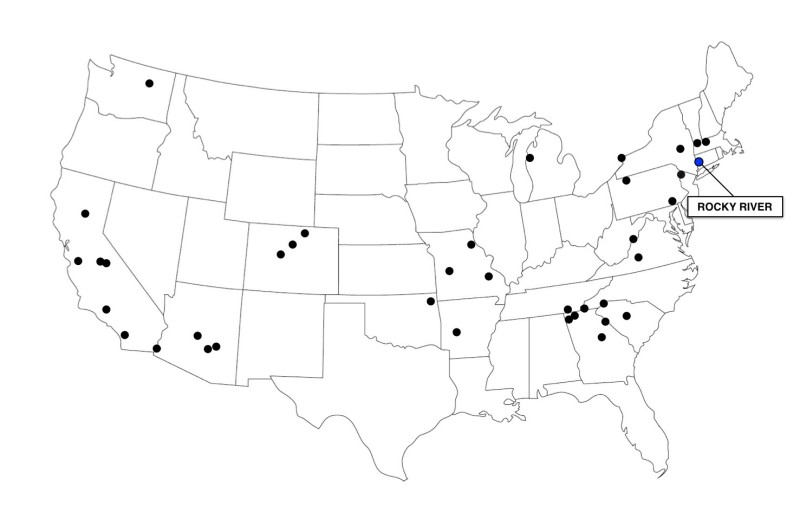
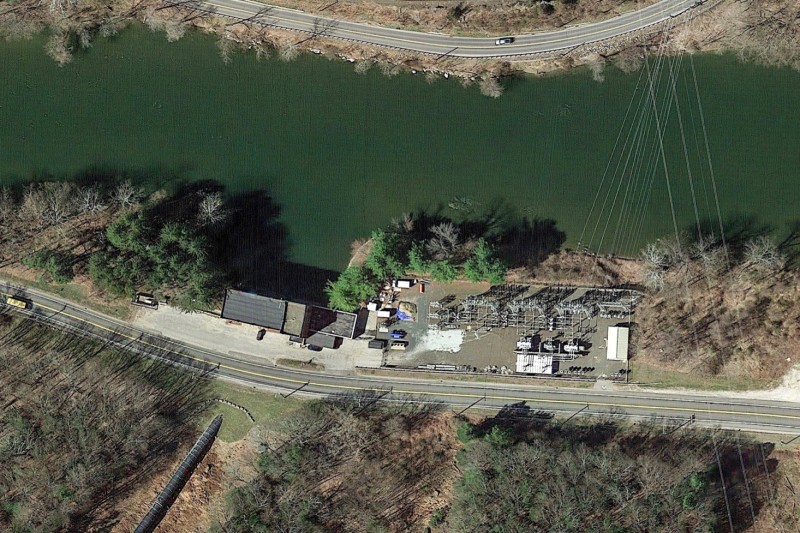
The Rocky River Pumped Storage Project is located near the small town of New Milford, in western Connecticut, on the Housatonic River.

Rocky River was the first major pumped storage hydroelectric project in the USA.

The powerhouse contains a pair of turbines that generate a modest 31 megawatts of electricity.

As with other pumped storage facilities, these turbines can be reversed, becoming pumps that lift water back up to the reservoir, from the river behind the plant.
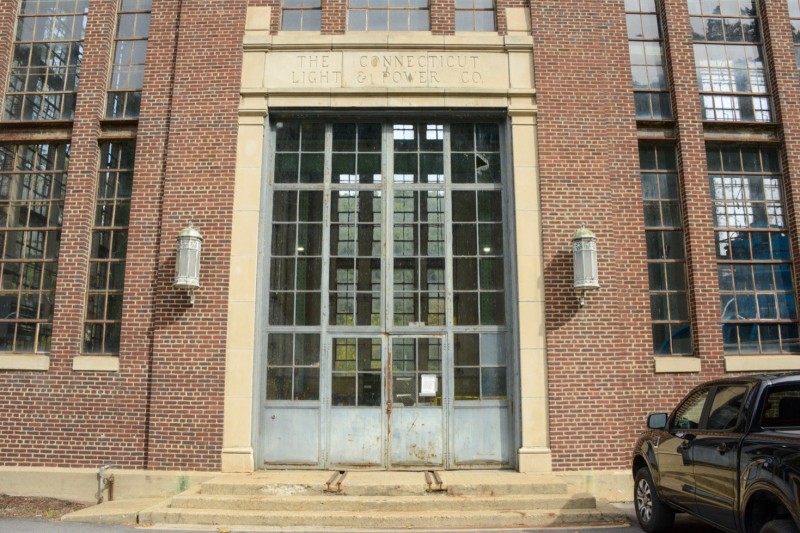
The plant, the first facility in the nation with this capability, opened in 1929, built by the Connecticut Light and Power Company. It is now operated by FirstLight, a regional renewable energy company.

The pipe feeding the plant can be seen across the road.

This 1,000-foot-long, 15-foot-wide penstock pipe connects the plant to the reservoir, and is topped by a standpipe that allows water to escape during a surge in pressure.

The reservoir, located 200 feet higher than the river, is called Candlewood Lake.
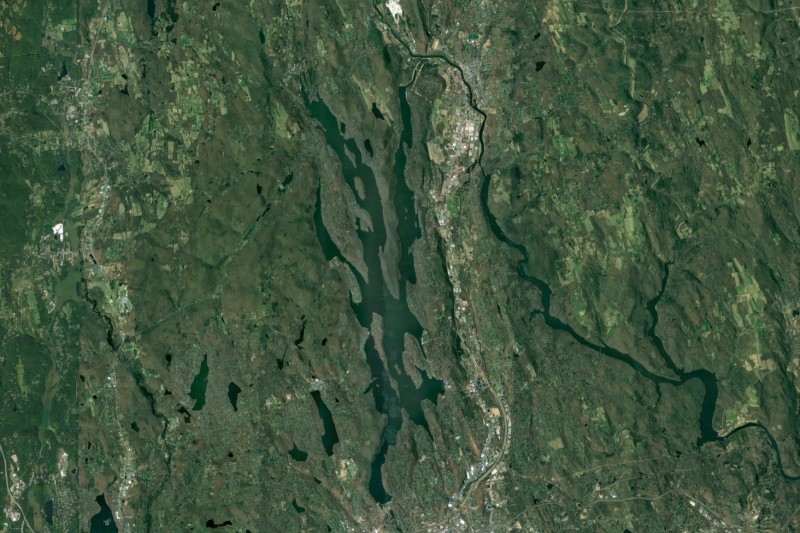
Candlewood Lake was built between 1926 and 1928, and is the largest lake in Connecticut.
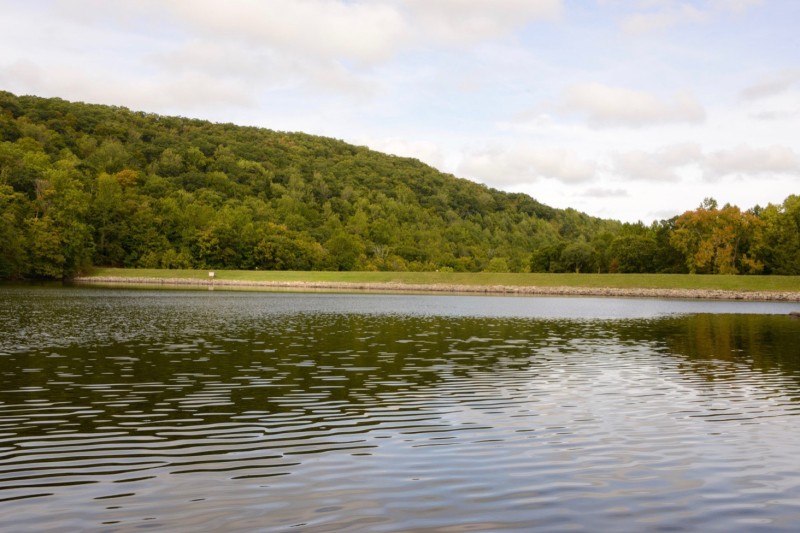
Dams were constructed and 4,500 acres of trees were cleared to create the basin, which covers eight square miles.
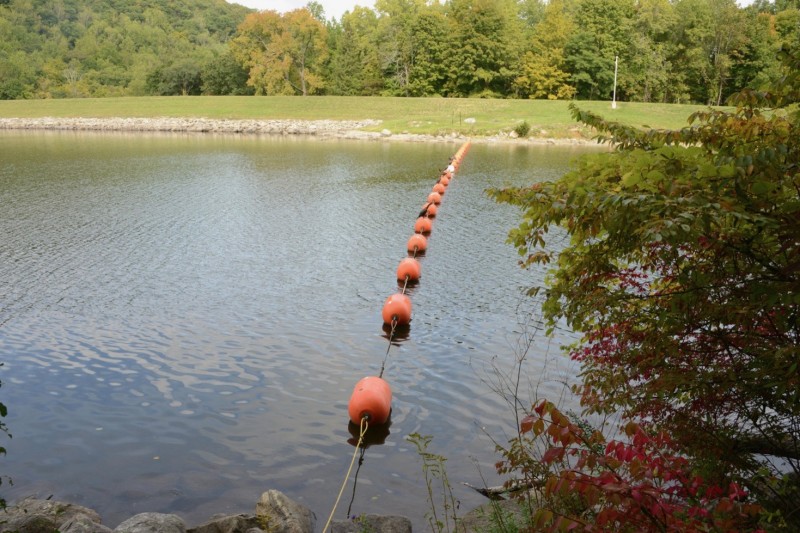
To create the lake, hundreds of people were relocated, including 35 families in the small town of Jerusalem.
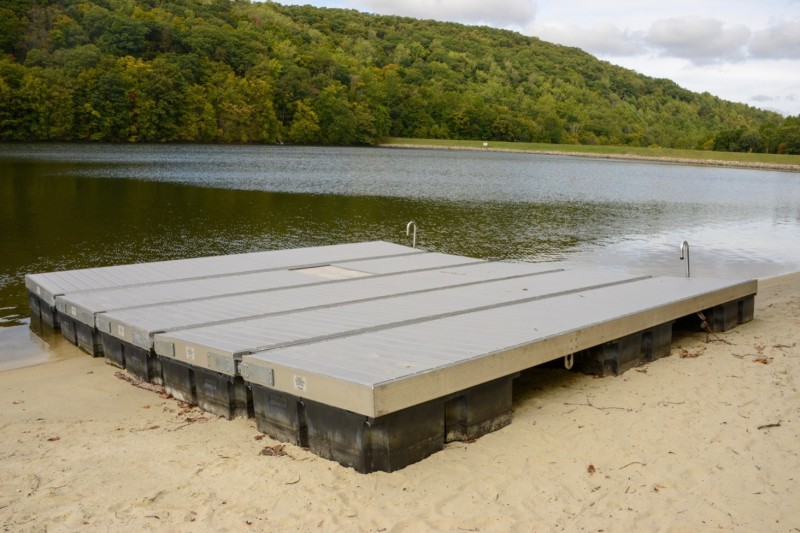
The Rocky River Station began pumping water into the basin in February 1928.
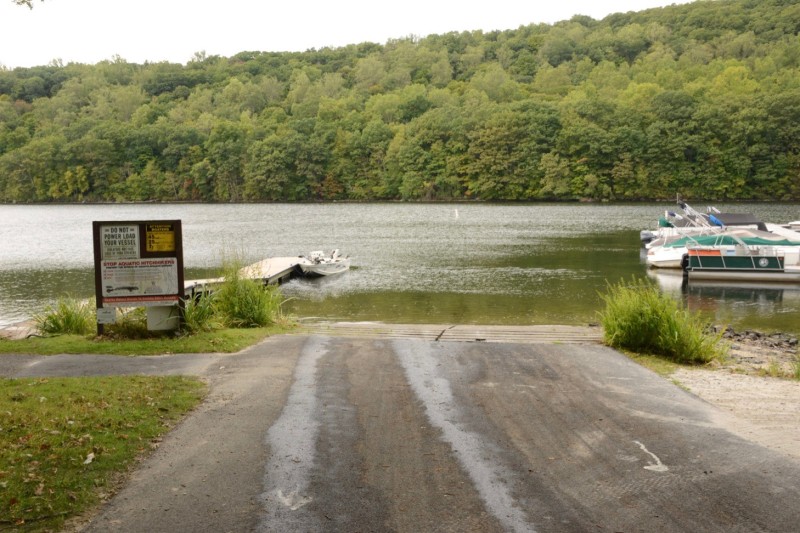
Though more than a hundred buildings were demolished, much remains beneath the waters, including roads and vehicles, visited by scuba divers today.

The lake is a popular recreation site, and is lined with private property and homes.
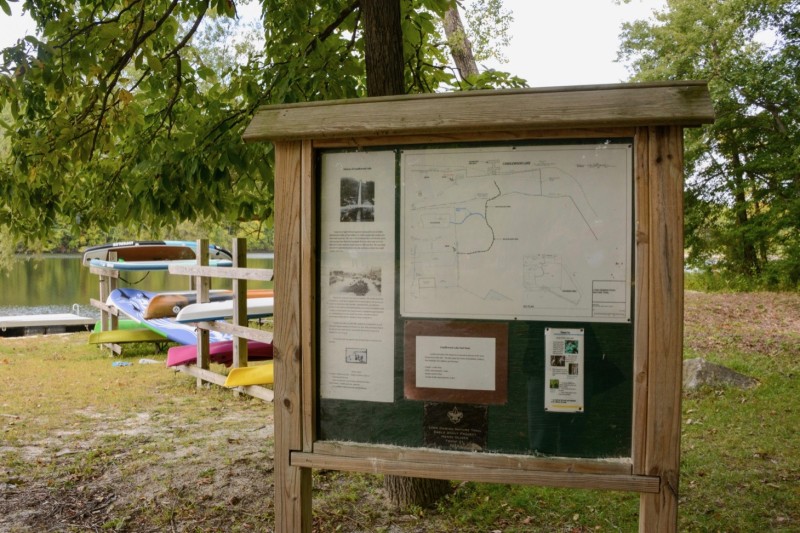
At a park on the shore, a map kiosk features a few images and paragraphs with historic information.
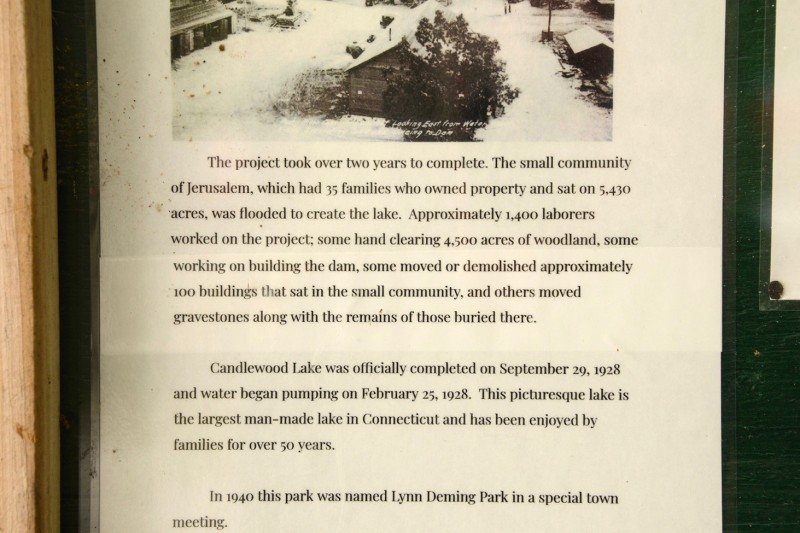
Otherwise there is little on site to explain what the lake is, or how it got there.
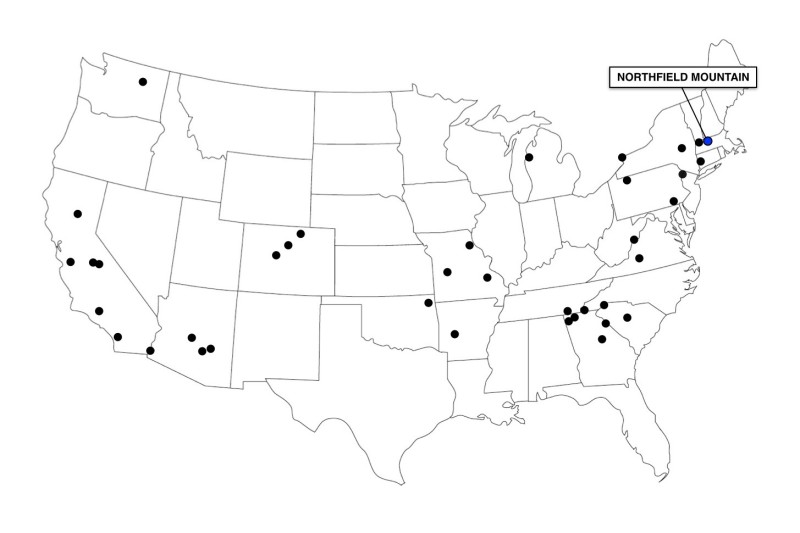

FirstLight operates another pumped storage project at Northfield Mountain, 120 miles away in western Massachusetts.

The 320-acre upper reservoir is off limits, atop the mountain, and the pipelines and power plant are underground.

The water is pumped in and out of the Connecticut River at an unmarked intake/outfall.
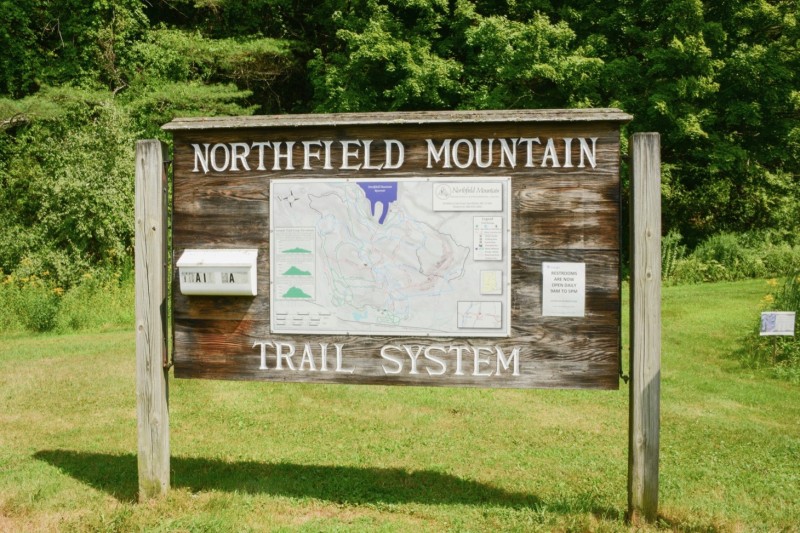
As is required by the utility’s federal operating permit, visitation to parts of the Northfield Mountain grounds is encouraged, along walking trails in the summer, and cross-country ski trails in the winter.
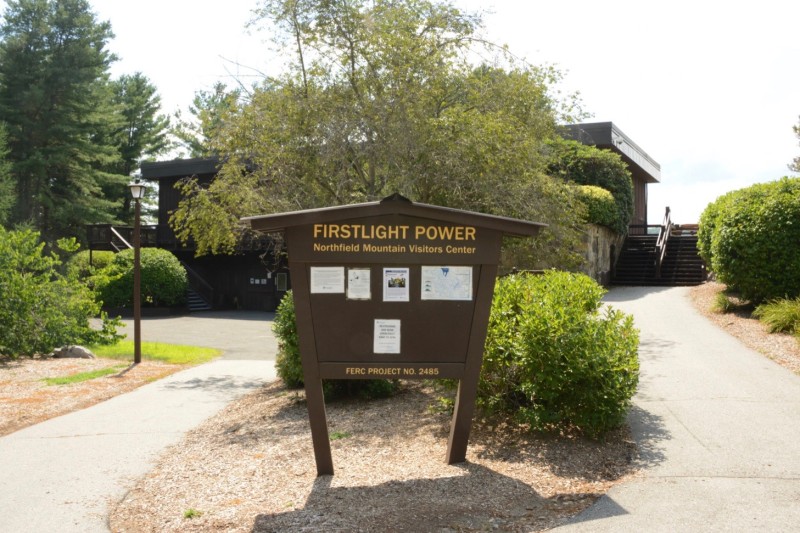
Hikers and skiers are invited to stop in at the visitor center near the entrance, though most of the displays have been closed since the Covid pandemic.

The few visitable displays are about the natural history and recreational activities available there.

One small sheet describes the facility, which, after four years of construction, opened in 1972 as one of the largest pumped storage plants in the world. Today, there are only a dozen or so pumped storage plants of its size in the USA.

Filling the reservoir takes 11 hours, and draining it takes eight hours, using all four turbine/pumps in the power station. This generates 1,168 megawatts of power on the way down, but consumes around 30% more than that on the way up.

Access to the underground power station is through a portal at the base of the mountain, off limits to the public.

Like many other pumped storage plants, Northfield Mountain was constructed to balance the power grid for a nearby nuclear power plant, in this case Vermont Yankee, a few miles up the Connecticut River.
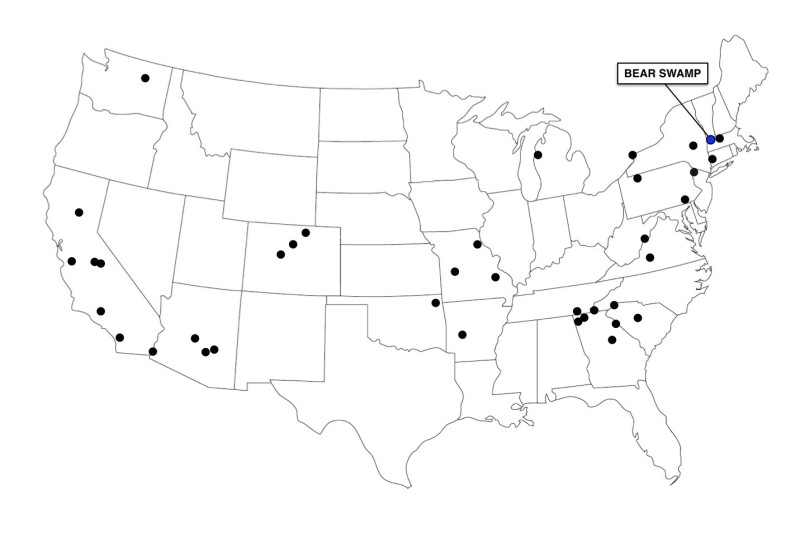

25 miles further west into the Berkshire Mountains is Bear Swamp, the third of three pumped storage projects in New England.

The upper storage reservoir at Bear Swamp was constructed on a hill several hundred feet above the Deerfield River, which serves as the lower reservoir.
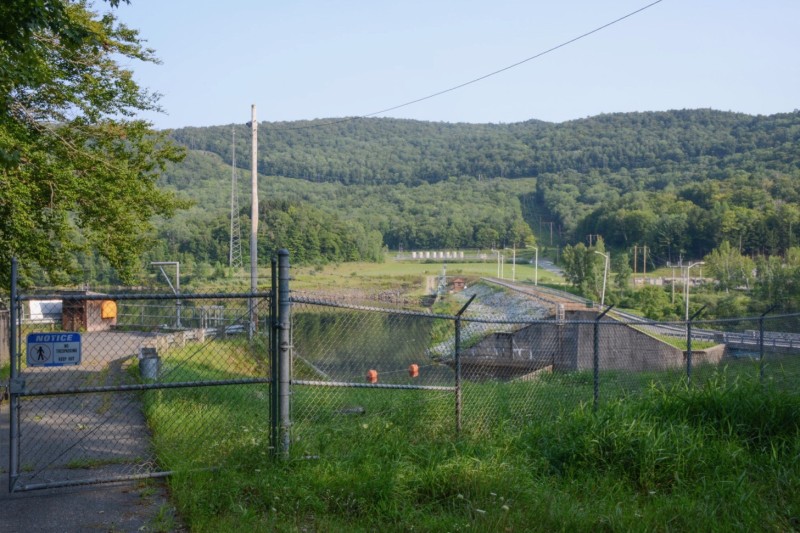
The Yankee Rowe nuclear power plant was located next to a dam three miles upstream.
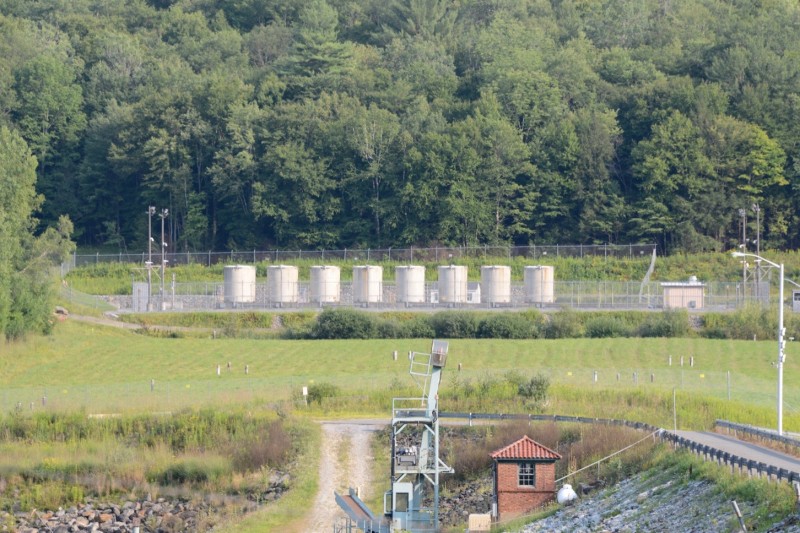
It was torn down after three decades of operation, and all that remains are its radioactive spent fuel assemblies, stored in upright dry casks, indefinitely.
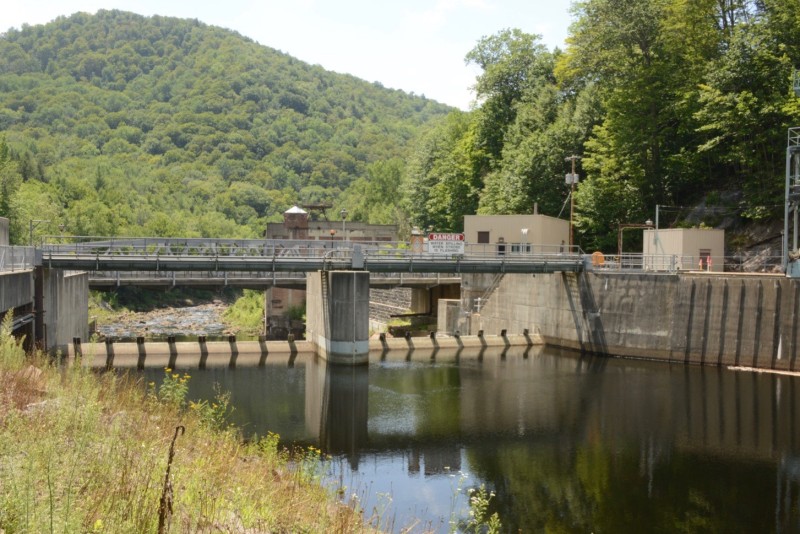
The Deerfield River is what is called a hard working river. Though only 70 miles long, it drops more than 1,000 feet through the hilly northern Berkshires, and has ten dams along its course, each producing electricity.

It is also a hard playing river, with busy recreational rafting and kayaking taking advantage of the controlled releases from its dams.
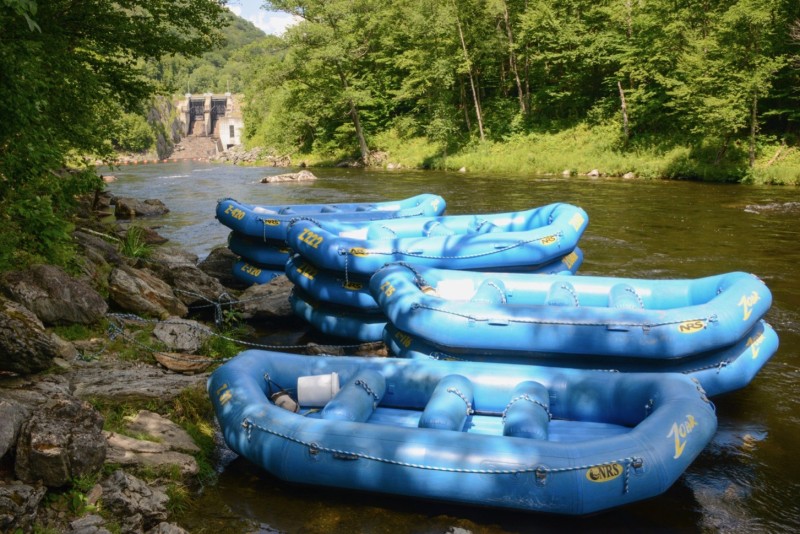
Much of the rafting starts below the Fife Dam, behind which is the lower reservoir for the Bear Swamp Project.

Atop the dam is the service road that leads to the Jack Cockwell Station, the powerhouse for the project, which is located underground, below the upper reservoir, on Rowe Mountain.
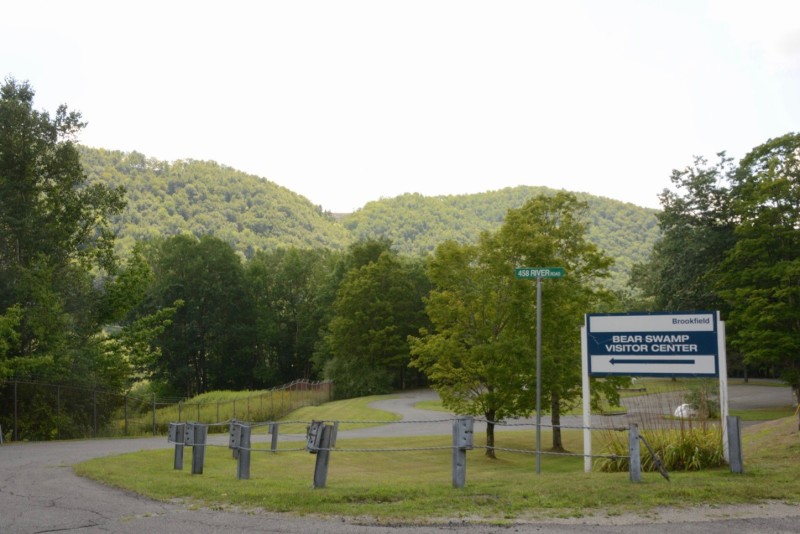
The edge of the upper reservoir is visible above the trees from the other side of the river, near the visitor center parking lot.

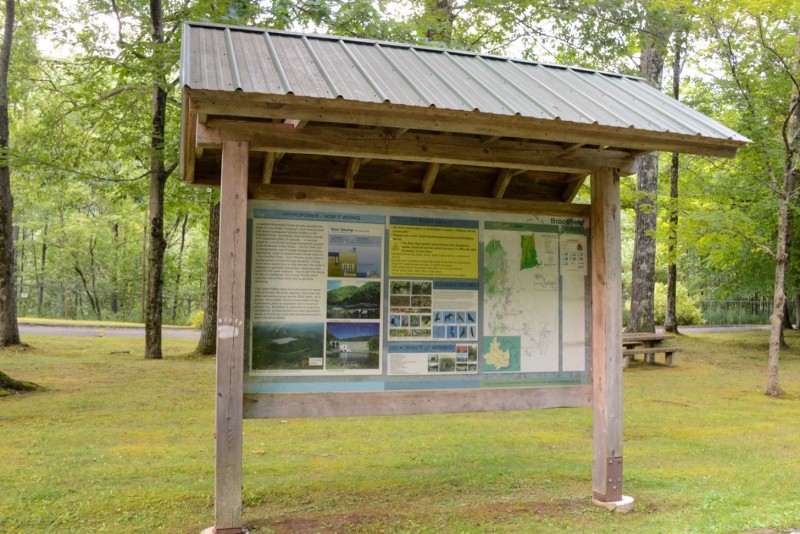
An interpretive kiosk at the visitor center briefly describes the project, and talks about local flora, fauna, and recreational opportunities.

Construction started in 1968, and was completed in 1974. The plant has two turbine/pumps that together generate 600 megawatts, enough to power around 60,000 homes, at least for the few hours that it takes to drain the reservoir.
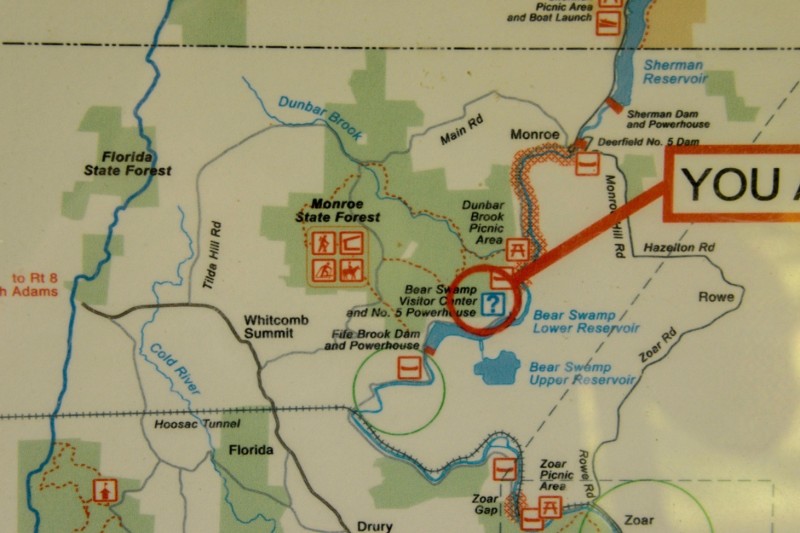
The project is owned by two companies: Brookfield Asset Management, an Australian investment and infrastructure company that operates thousands of sites all over the world; and Emera, a utility company based in Nova Scotia.
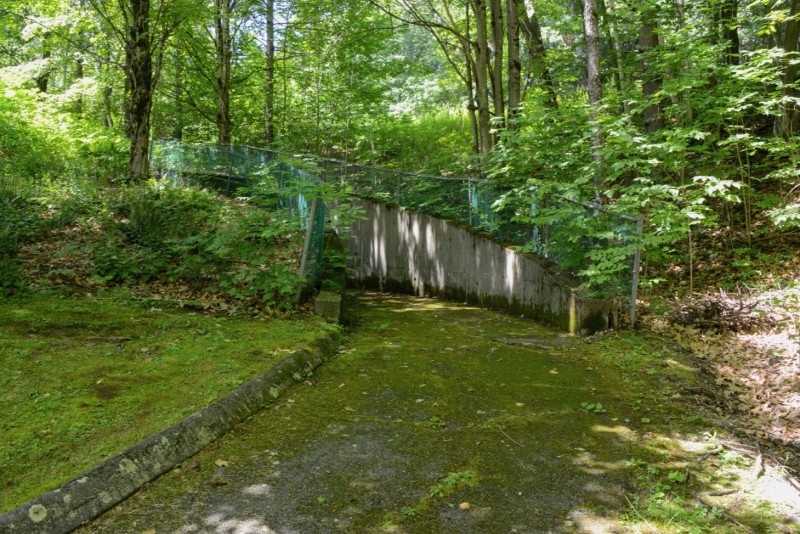
A path leads from the parking lot to the visitor center.

Like the power plant across the river, the visitor center is underground.
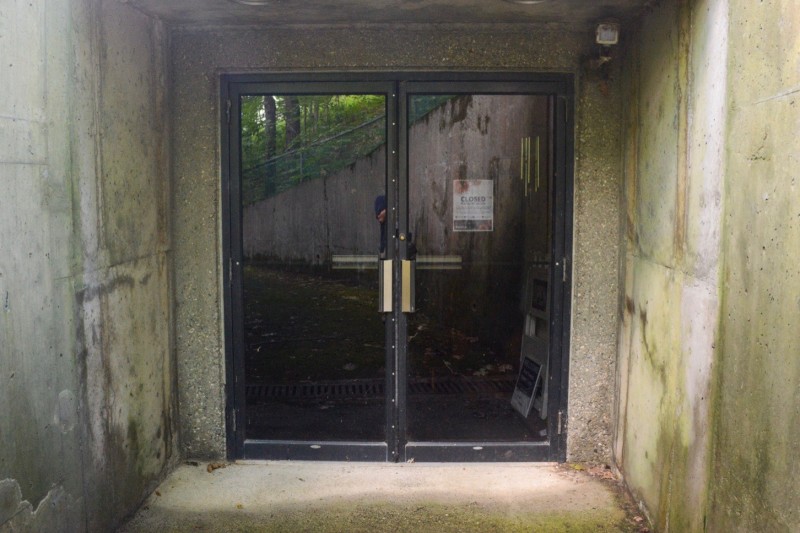
It has been closed for the past few years, due to the Covid pandemic, and, like others in the industry, it may or may not reopen.

In the meantime, peering through the glass doors, visitors at Bear Swamp can make out a carved wooden bear holding a fish, and a curved hallway leading beyond, into the unvisitable visitor center.

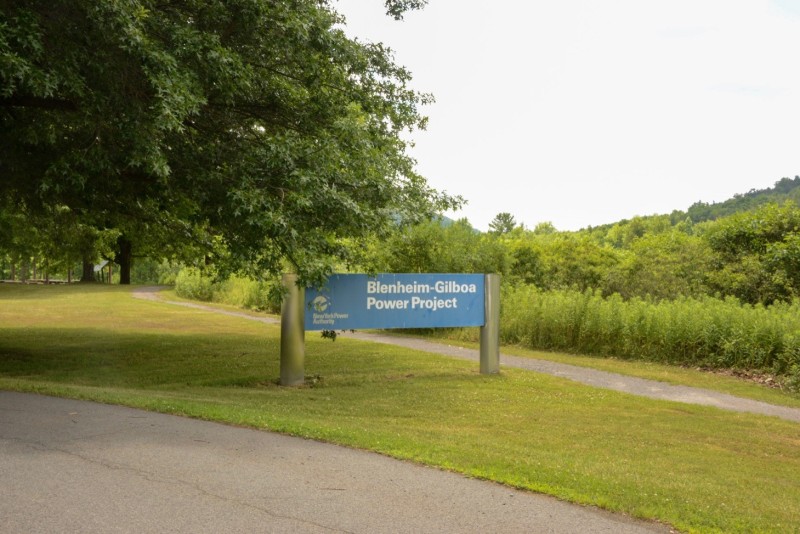
75 miles west of the Berkshires, and past the Hudson River Valley, lies Schoharie Creek, and the Blenheim-Gilboa Pumped Storage Project, in New York State.

The project has an upper storage reservoir on Brown Mountain, and uses a dammed portion of Schoharie Creek as a lower reservoir.
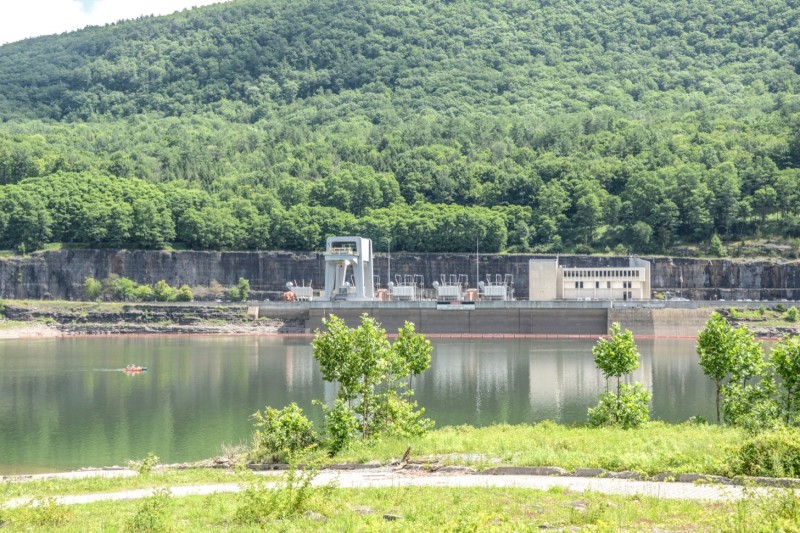
A power plant on the riverbank at the base of the mountain contains the pump/turbines that both lift water to the upper reservoir, and produce 1,100 megawatts of electricity when water flows back down through them.

The operation is visible and explained at a number of locations in the area.

Mine Kill State Park is on the shore across from the project, and was established in the early 1970s to provide public recreational space, as required for the project’s construction and operating permit.

The park provides picnic and hiking opportunities, which are unavailable around the reservoir and power plant across the river.

There is also a boat ramp, across from the power plant.

The plant facilities are owned and operated by the New York Power Authority, which operates a visitor center nearby, inside a transformed and repurposed barn.

Inside are sophisticated interactive displays that describe the project in detail.
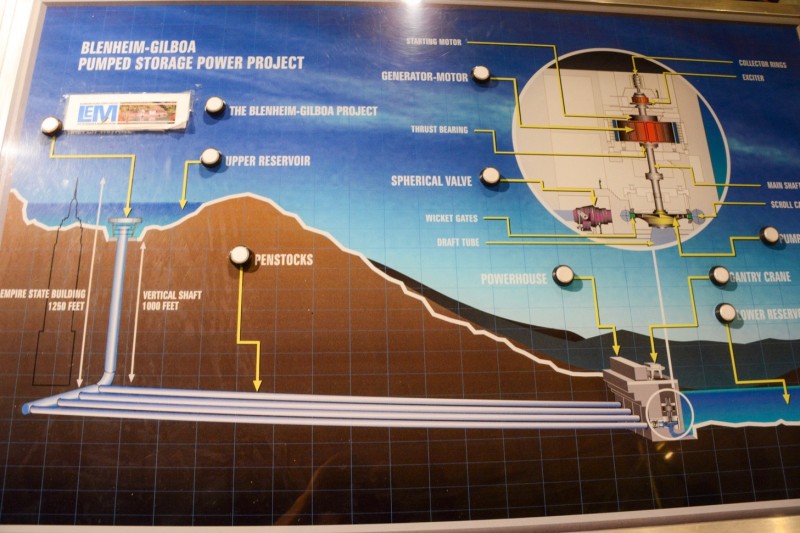
How the four underground penstocks provide water from the upper reservoir to the four turbines in the power plant.
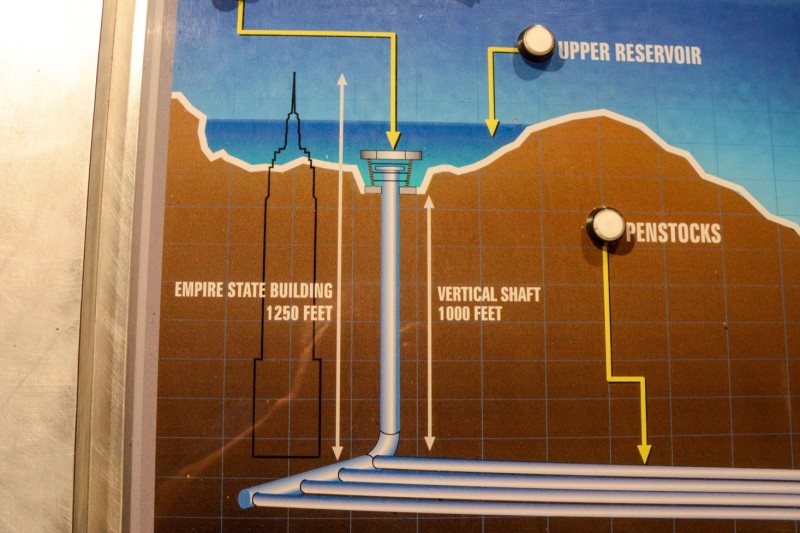
And how the upper reservoir is more than a thousand feet above the lower reservoir, a height similar to the Empire State Building.
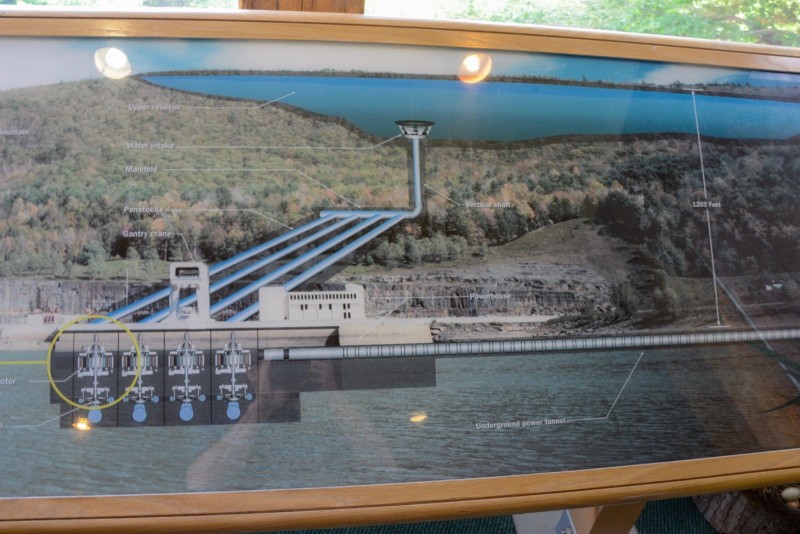
Other panels describe the operation too.
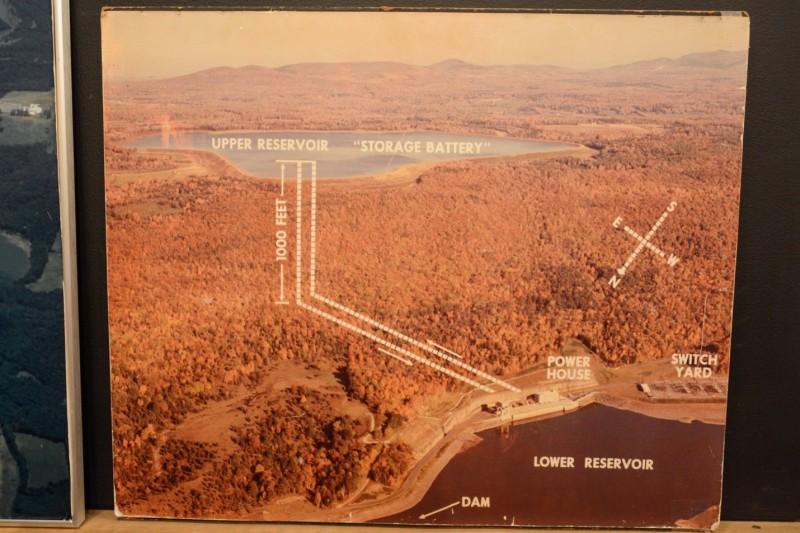

The displays in the state visitor center differ from those in the Gilboa Museum, located nearby.

The Gilboa Museum describes local history, and the impact of floods and dams along Schoharie Creek, a river which still has disastrous floods, despite all the dams along it.

The Schoharie Reservoir, three miles upstream of the pumped storage project, is the most distant part of the far-flung water supply system for New York City.

It is connected to the city through a network of tunnels and aqueducts, starting with the 16-mile-long Shandaken Tunnel, once the largest water tunnel in the nation, which originates at an intake on the western shore of the reservoir.

The reservoir was constructed in the 1920s, and required the removal of the town of Gilboa, including its houses, people, and graves.
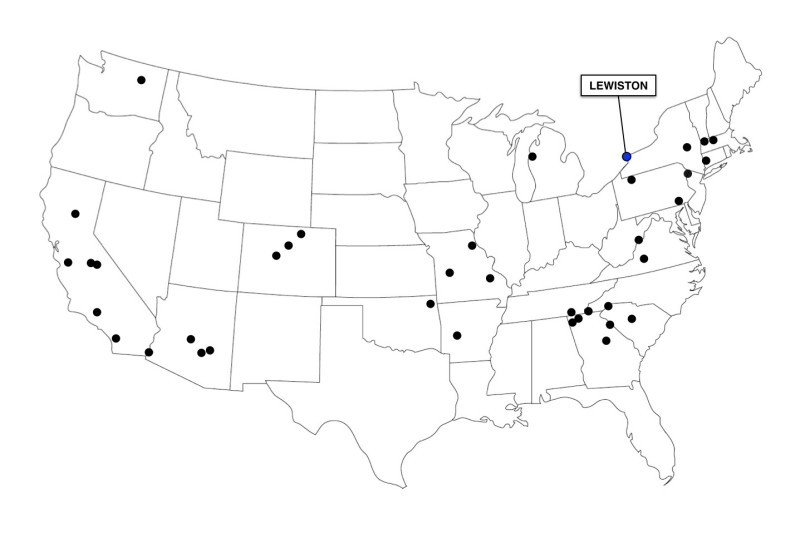

At the other end of the state is the Lewiston Pumped Storage Project, comprised of a massive upper reservoir, covering three square miles, and a pump station/power plant, next to the Niagara River.
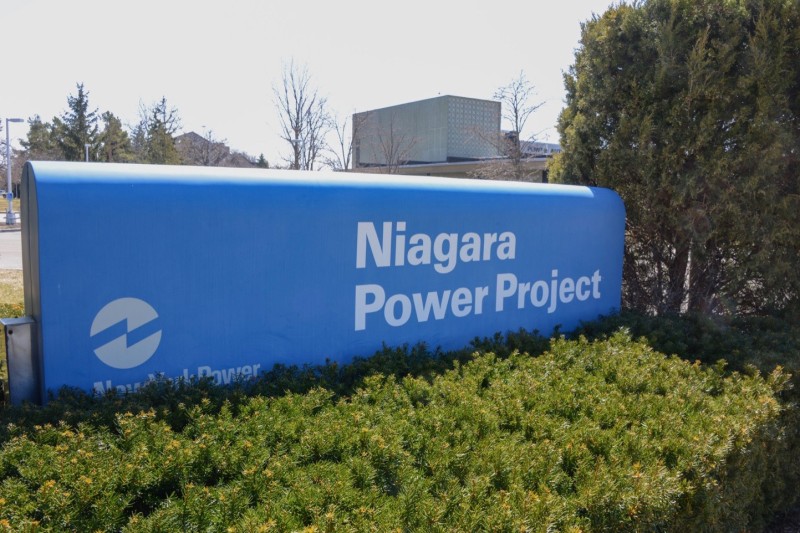
It is part of the larger Niagara Power Project, which includes the Robert Moses Generating Station, one of the largest hydroelectric plants in nation.
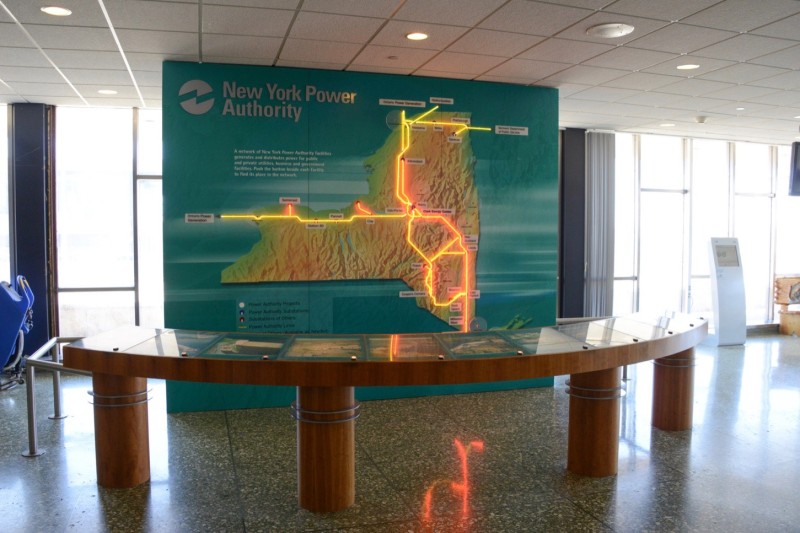
The Niagara Power Project, in turn, is part of the New York Power Authority’s statewide electrical production and distribution system.

The system is described in the New York Power Authority’s Power Vista, a visitor attraction that rivals those at Niagara Falls, four miles upstream.
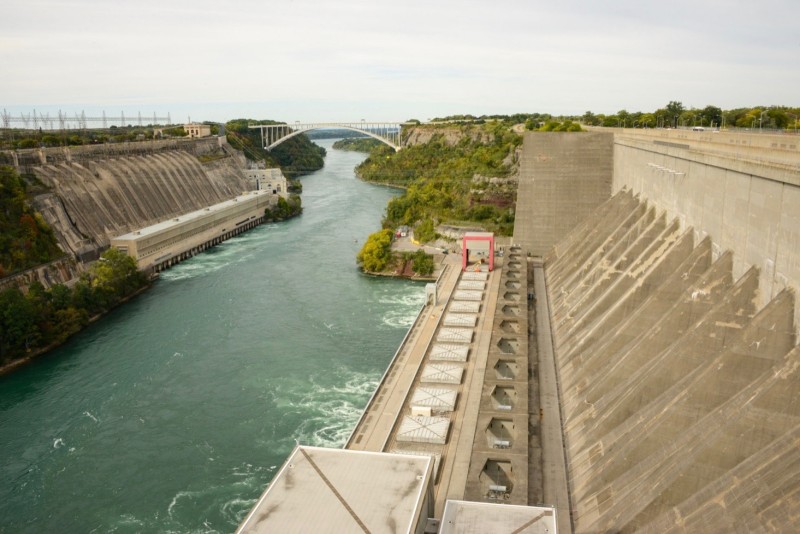
The downstream view from the overlook at the Power Vista is of a gorge with walls like concrete waterfalls. On the left is the Adam Beck Generating Station in Canada, and on the right is the Robert Moses Generating Station in the US, each producing more than 2,000 megawatts.

Inside, the Power Vista provides two floors of static and interactive displays about the superlative electrical generation facilities in the region.
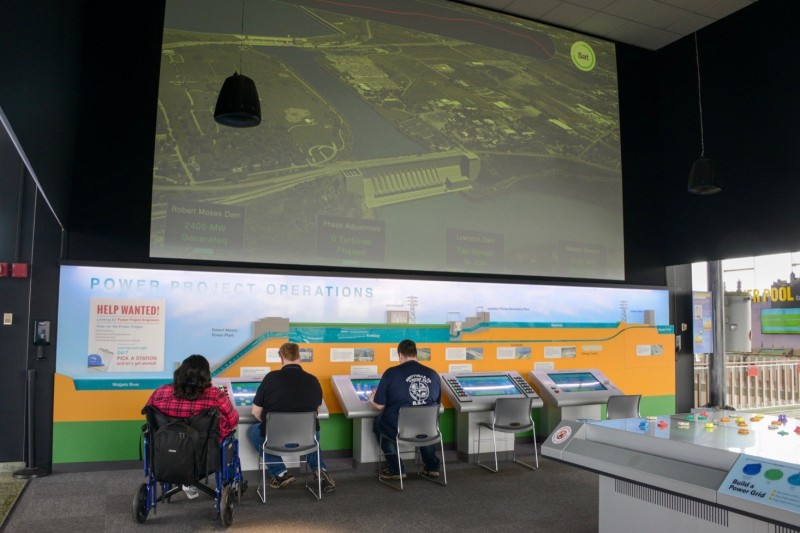
One interactive display allows visitors to operate a simulated system control station.

Graphics describe the Lewiston Pumped Storage Facility, and its relationship with the wider system.

The Lewiston Pump-Generating Plant lies between the upper reservoir and the lower reservoir, known as the forebay.

In addition to being the source for the pumped storage operation, the forebay, which holds two billion gallons of water and is nearly a mile long, also feeds the Robert Moses Power Plant.
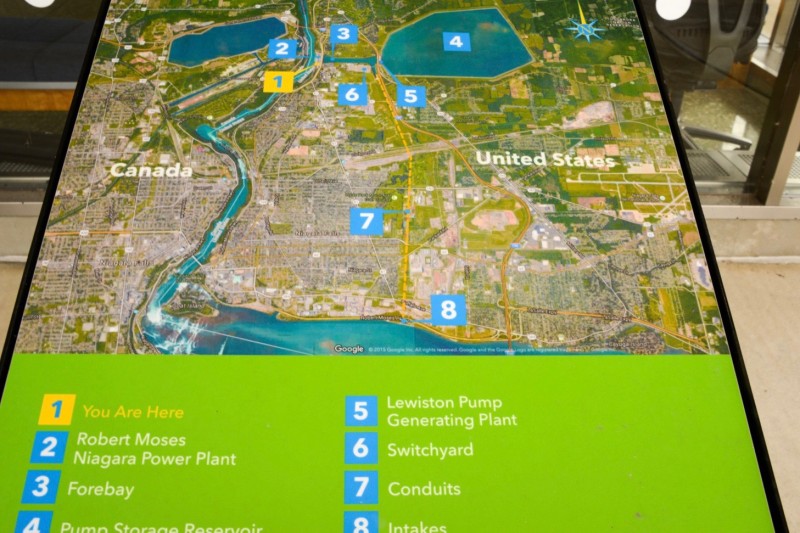
The forebay is fed by a conduit which draws water at intakes above Niagara Falls, and runs under the city like a submerged river, for four miles.

Visitors use the simulated control station at the Power Vista to try to balance the pumping versus electrical generation at the Lewiston Pump-Generating Plant, switching between “generate” and “pump” based on electrical demand.


Though not clearly marked, it is possible to visit the actual upper reservoir, by walking up its side, next to a soccer field.
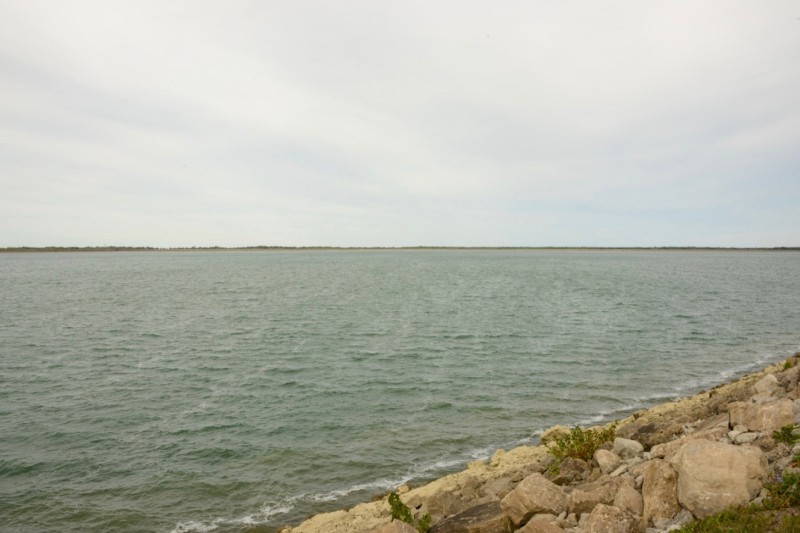
What the reservoir lacks in elevation above the power station (less than 100 feet, far less than most pumped power facilities) it makes up for in area–1,900 acres, and in volume–20 billion gallons.
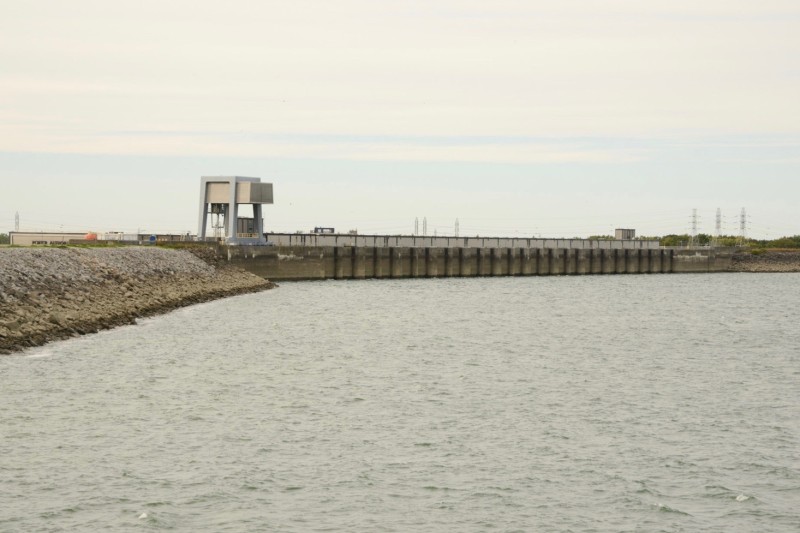
Along the western edge of its six miles of shoreline are the short penstocks at the top of the 1,000-foot-long pumped power station, which functions like a dam in the wall of the reservoir, inside of which, 12 reversible turbine/pumps are spinning one way, or the other.

Viewed from below, the power station appears static, despite the water coursing through it, pumped up at night, when electrical demand is low, then down during the day, when demand for power is high, adding 240 megawatts to the grid. A river of water passing in and out, under the flow of traffic on the road.